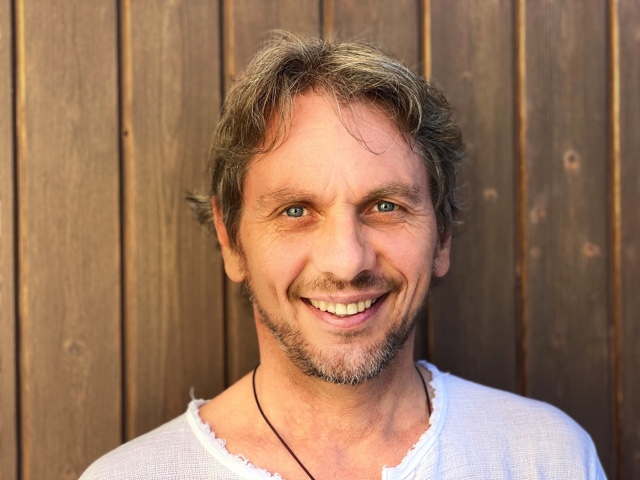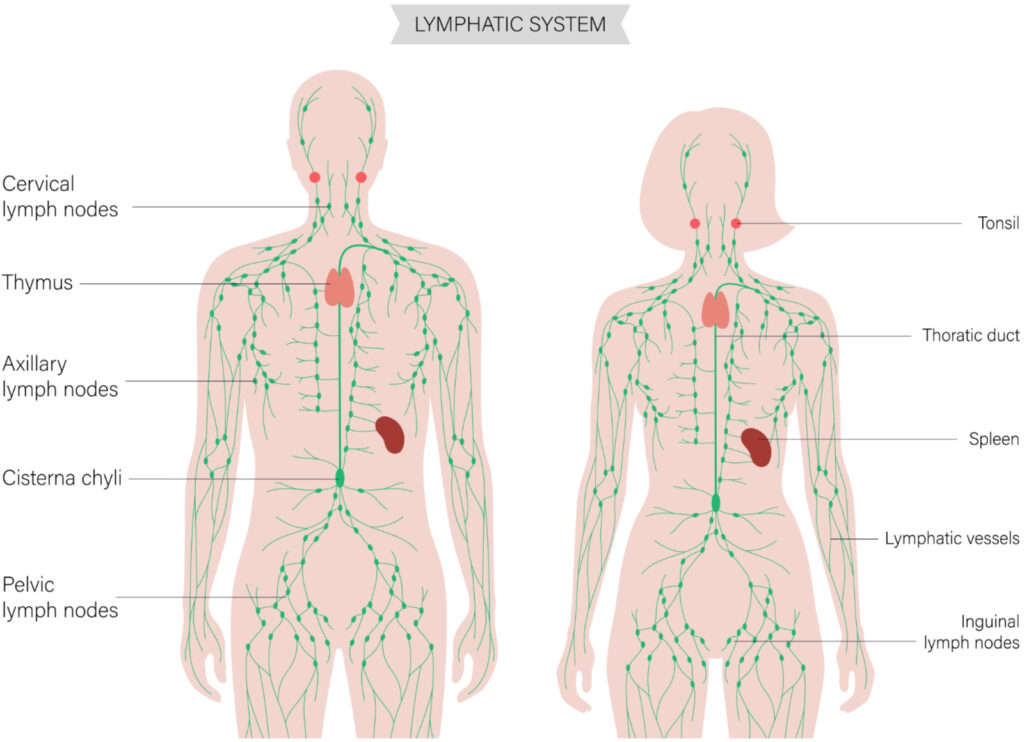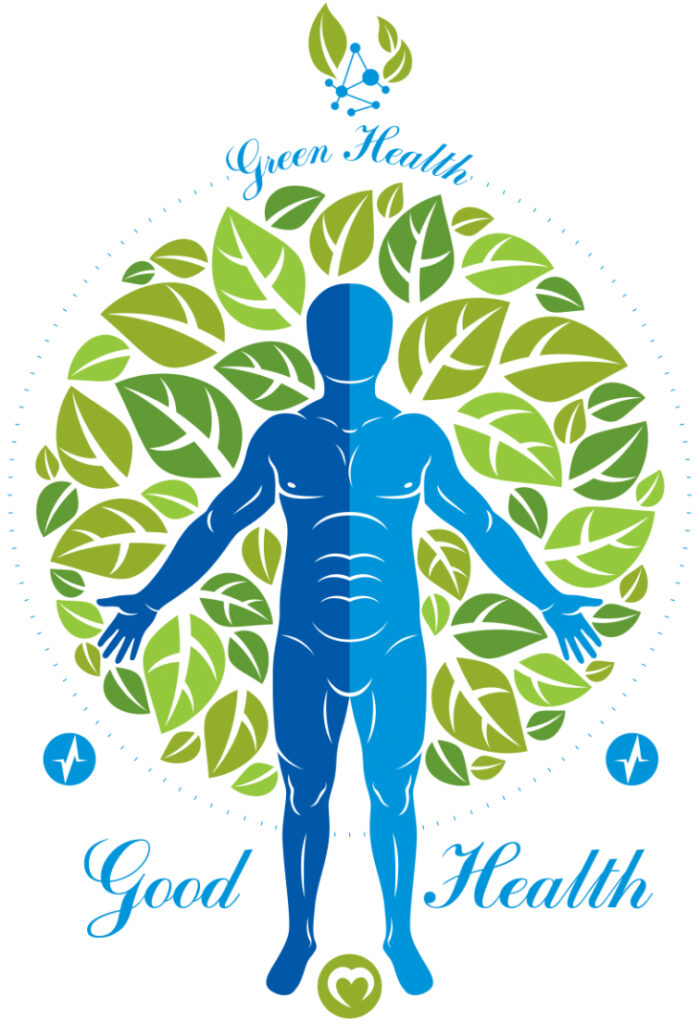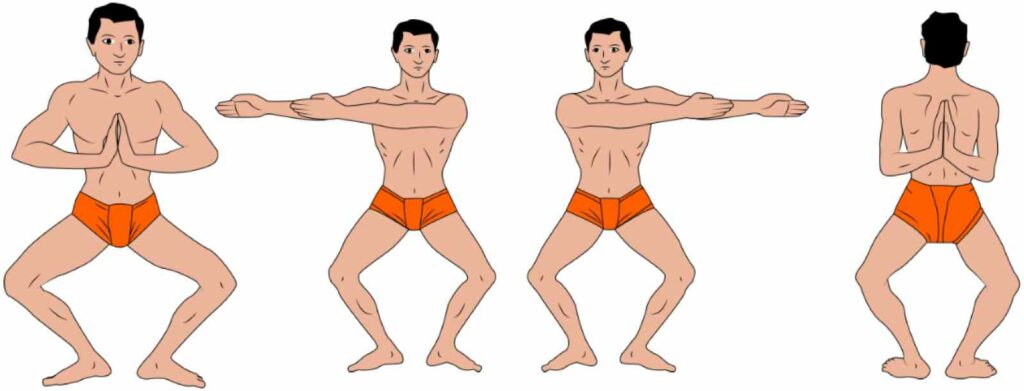By Christian Franceschini

Human beings are bio-psychological phenomena in evolution—a work in progress! Novel activities, increasingly subtle feelings and more dynamic environments bring about fresh biological, and mental processes in us, conveyed by an ever-growing complex nervous systems,* new hormones** and new ways of thinking.
* en.wikipedia.org/wiki/Evolution_of_nervous_systems
** R. Bouillon, D. Drucker, E. Ferrannini, E. et al. The past 10 years—new hormones, new functions, new endocrine organs. Nature Reviews Endocrinology 11, 681–686 (2015). doi.org/10.1038/nrendo.2015.142
Shukra* is an ancient concept.* The main system of Indian indigenous medicine, the ancient Ayurveda, identifies shukra as the final essence of all other bodily elements: “A person who has healthy shukra has a brightness of confidence, with eyes and skin that seem to radiate light.”***
* Sanskrit, from the Vedic—proto-Indo-Aryan—sukras, “bright”, “resplendent”.
** Principles of Ayurvedic Medicine, Dr. M Halpern, California College of Ayurveda (2020).
*** Ojas: Amazing Secrets of Yogis to reclaim Vitality and achieve Eternal Youth, S. Velayutham, Alive in Matrix (2013).
In common parlance, the term shukra is synonymous with male semen or sperm. We will see in this article that reducing shukra only to sperm immersed in the seminal fluid does not do justice to the proper bio-psychological understanding of it. In the Ayurvedic tradition, shukra is regarded as one of the seven tissues (dhatus) of the human body. It is counted as the final of the seven tissues, each one resulting from the transformation or sublimation of the preceding tissue. This concept of the seven fundamental tissues does not correspond to the physiology of Western conventional medical science. The seven tissues, according to the Indian yogic and medical systems, may be numbered as:*
(1) Rasa, chyle (lymph), (2) Rakta, blood, (3) Mamsa, muscle, (4) Madya (Vasa), adipose (fat), (5) Asthi, bone, (6) Majja, marrow, 7) Shukra, semen.
* ayurvedakendra.in/discover-ayurveda/the-theory-of-ayurveda/saptadhatu-7-essential-body-tissues/
Some schools add an eighth tissue called Ojas.* Ojas is considered as the great tissue, mahadhatu, but not as an actual physical tissue; it is the psychic radiance that results from the appropriate sublimation of the seventh dhatu, shukra.**
* Ojas: Amazing Secrets of Yogis to reclaim Vitality … ibid.
** Charak Samhita, Shree Gulabkunverba, Ayurvedic Society (1949). carakasamhitaonline.com/mediawiki-1.32.1/index.php/Ojas
For a number of reasons one may be right to question traditional treatises of shukra. First, on closer inspection this tissue is usually considered as male seed only, and not as female. The traditional view does not take into account female ovulation and nourishing of offspring. Second, it is unclear how physical seed or semen can be transformed into psychic effulgence, which is claimed by oriental traditions or doctrines.
Subtler Interpretations
While the concept of shukra is often elaborated in Eastern astronomy and astrology as a matter of personal life,* and conspicuously love life, among the ancient practitioners of yoga, shukra was known as the essence of the essence of physico-psycho-spiritual vitality. Indeed, the enigmatic shukra was conceived of as the golden elixir of life: “The holy centre known as the site of extraordinary vitality (shukratīrtha) is conducive to the achievement of all perfection (siddhis). “It subdues sins and destroys ailments,” as stated by the renowned Yogavashista.**
* Súrya Siddhánta: A Text-book of Hindu Astronomy, E. Burgess (1989). P Ganguly, P Sengupta (ed.), Motilal Banarsidass (reprint), Original: Yale University Press, American Oriental Society, pp. 8–9.
** Fifty Stories from Yogavasishtha, Dr. Vijayshree, Nag Publishers (2006), p. 40.
Also: Shukra Graha Prarthana, trad., Giri Publications, Chennai, India.
In spiritual science, however, shukra must be explained physically, biochemically, anatomically, physiologically, and not the least bio-psychologically. Its role in psycho-genesis—psycho-physically and psycho-spiritually—can be explained only by thorough analyses of actual processes. Hence, serious research on shukra would touch on topics such as physical health, the strength of the immune system, and sexuality in its four fundamental expressions—physical, psycho-physical, psychic and psycho-spiritual, and all-round physical, psychic, and spiritual growth.
The neuro-endocrine aspect and the mental stamina of the human beings would be included in the effort. In addition to these interrelation-ships, why yogis and yoginis attach so much importance to the control and production of shukra still needs to be clarified.
Shri P. R. Sarkar on Shukra
Neohumanist founder Shrii Prabhat Rainjan Sarkar gives us a different definition of shukra than those of past traditions. In his words,
“The food taken in, after mixing with the digestive fluids, is transformed into rasa, while the superfluous material is discarded in the form of urine and other waste substances. The essence of rasa is transformed into blood, while the waste material is again discarded. The essence of blood turns into flesh and the essence of flesh into meda or vasá (fat), and so on, until it turns into bone, bone marrow and finally into shukra. The physical body is made up of these seven materials, of which shukra is the final essence. This vital fluid has three phases: lymph, or práńa-rasa (lasiká); spermatozoa and seminal fluid.”
– “Procedure for Fasting”, Ananda Marga Caryácarya Part 3. Ananda Marga Publications.
Shrii Sarkar’s definition introduces a new concept into yogic science, the práńa-rasa, also termed as lasiká. In various discourses, he makes it clear that this life-blood is the phase or stage before the formation of the sperm (seed) and its nourishing fluid.
“The physical body consists of seven tissues, of which shukra is the final essence. This vital fluid has three stages. The first stage is the lymph in both males and females. The second stage is spermatozoa in males and ova in females. The third stage is seminal fluid in males, while in females it comprises substances present in the female reproductive system that contribute to the nourishment of the ovum and offspring.”*
– “Glossary”, The Awakening of Women, Ananda Marga Publications.
“… Shukra … is the most developed stuff—the cream of all creams. Chlorophyll accelerates the speed of the production of lymph, but it does not act as the initial stuff.”*
– “Bio-psychology”, Yoga Psychology, Ananda Marga Publications (1991).
This new analysis challenges the bias that only males produce shukra and women do not. It places men and women with the same potential, as there is a common and shared view that anybody who produces shukra (needs consistency whether this is capitalised or not) has sublimating access to ojas, which is considered the splendour or mental aura. Ojas opens the door to on-demand mystical and spiritual experiences as narrated from the experiences of different yogis.*
* There are several books on the moral principle of Brahmacarya erroneously conceived as sexual abstention; see bibliography.

Shukra as práńa-rasa, lifeblood
The word práńa in Sanskrit means “vital,” “energetic” and rasa “flow,” “fluid”—in our physiological case, lymph, the first of the seven tissues. It follows that the first stage of shukra can be defined as lymph or vital fluid or energy. It could also be called just lymph or super-lymph (“s-lymph”) because of the many qualities and potential it has for structure and well-being of body and mind.*
* s-lymph: can be understood as shukra-lymph or superlymph, or prana-rasa, the clear liquid that soaks organic tissues and circulates in the lacunae and lymphatic vessels of vertebrates. Totipotent cells can form all cell types in the organism, in addition to extra-embryonic or placental cells. Embryonic cells within the first two cell divisions after fertilisation are the only totipotent cells. Pluripotent cells can give rise to all the cell types that make up the organism; embryonic stem cells are considered pluripotent Multipotent cells can develop into more than one cell type, but are more limited than pluripotent cells; adult stem cells and umbilical cord blood stem cells are considered pluripotent. Source: stemcell.ny.gov/faqs/what-difference-between-totipotent-pluripotent-and-multipotent
Where does this lymph/s-lymph come from? What produces it in our bodies? According to yoga and ayurveda, from the marrow. I believe there is reason to explore whether marrow tissue is the place and the organ that produces the lymph. Here, I define marrow as both bone-marrow and the marrow tissue of the lymphatic and endocrine glands. I propose that the stroma (structural, connective tissue) is the precursor element of the s-lymph in the bone-marrow. From the stroma stem cells emerge that are, according to their specific origin, totipotent, pluripotent, and multipotent.
Shrii Sarkar, in explaining the practices of tantra yoga, refers to how to transform shukra into mental substance and prevent the lymph from turning into semen. For example, through the practice of lunar fasting.* Yogis astutely follow a particular lifestyle to produce lymph in abundance and then harness this surplus of lymph for physical health, hormonal control, expansion in mass and volume of mental substance, increasing psychic stamina and achieving higher states of consciousness.
* Ekadashii, the eleventh day after the new moon and the full moon, where práńa-rasa (shukra 1st stage) may be sublimated into mental substance or citta, also called ectoplasm.
The lymph is the quintessence of our nutrition,* the crème de la crème on a physiological level. As remarked by Shrii Sarkar; it is like honey from pollen, butter from milk and oil from seeds. It is an inner superfood, the result of a bio-energetic refining and sublimation process. If one thinks of butter made from summer pastures, it looks like a bar of gold, it has an aura (ojas) all its own, as does honey, oil and gold purified of dross.
* I.e, of physical, liquid, airborne, ethereal, energetic food etc.
Hormones

According to new yogic science, lymph, and I would say prana-rasa, is the original hormone that produces all other hormones via the endocrine glands: “The lymphatic glands supply raw material—lymph—to the factories—the glands—and the surplus lymph goes to the brain and provides food for the nerve cells in the cranium. When lymph comes in contact with an activated gland, hormones are created.”* This reality is why handling of glands and bio-psychological processes in general, in day-to-day activities is so essential.
* Bio-Psychology, Yoga Psychology.
Shukra and yoga postures
Yoga asanas are essential tool for achieving dynamic balance and peace in one’s bio-psycho-logical life. Yogis have for millennia considered certain daily practices and rules of life fundamental to the production and preservation of the lymph. Yogic postures, asanas, compress and decompress the various endocrine and lymphatic glands in precise and specific ways. Such exercises should be done daily, not only for keeping the body healthy and flexible well into old age, but also as an aid to increase one’s mental and spiritual faculties.
If we take the posture of Gomukhasana as an example (illustration next page ), we notice how the axillary and pubic lymph nodes are drained in the posture, and there is also a massage of the gonads. This asana, in fact, has the task of draining the medullary tissues of the lymphatic and sexual glands. The lymph enters the lymphatic system and then blood circulation is available to the whole body, but especially to the brain, which is a great consumer of the lymph.

Gomukhasana is a most useful posture for controlling the sexual instinct and lower tendencies typical of the 2nd plexus, the svadhistána chakra. By bringing into circulation the surplus of lymph pro-duced by the axillary and pubic lymph nodes, it con-tributes to what many yogis want to achieve: the total control of one’s lower mental or animal tendencies.
It is important to remember that it is the lymph that is sublimated into mind and then into ojas and not the sperm. Once formed, sperm inevitably leaves the body from the genital organs, either through sexual intercourse, nocturnal seminal loss, or in the morning urine.
The concept of pra’na-rasa (“s-lymph”) also explains why proper sexual control strengthens the mind and enhances biological vitality; whereas indulging in seminal loss turns the lymph into semen, which can no longer be used as food for the brain.
Nature is always very generous in supplying its living beings with reproductive substances. Whether pollen, seeds, sperm, or oocytes, there is always plenty of them since fertilisation does not always and immediately take place 100%. of the time. Most of the semen produced is not used in the production of offspring.
In Bhavasana, “the posture of ideation,” the particular drainage of the axillary lymph nodes associated with a leg position, is particularly suited to reflux stagnant lymph from the peripheral vessels to the many lymph nodes closer to the larger joints such as those in the pelvis and the armpit and breast area. The con-tinued crossed gaze of the eyes toward the center, between the eyebrows, called trataka in Sanskrit, conveys more s-lymph into the higher glands, such as the pituitary gland or pituitary gland.

Note that the peripheral lymph is drained through muscular activity to the heart where it enters through the right lymphatic duct and thoracic duct into the blood circulation; then mixed with the blood. The lymph then flows to the two kidneys that filter the blood from its impurities, and also to those carried by the peripheral lymph. The waste now turned into urine leaves the body by urination.
For the s-lymph, on the other hand, the journey is different. Since it is not a waste but rather a super resource it remains in the bloodstream to reach every tissue or cell in the body. In Bhavasana, a special pressure is created in the brain area, which optimises absorption of prana-rasa into the brain area, supplying glands and the brain with this s-lymph. Part of brain activities, create molecular clashes in neurons sublimating prana-rasa or s-lymph into mental substance or ectoplasm. This is why Bhavasana is useful for mental stability and cognitive faculties; it is helpful in concentration, contemplation, meditation, intellectual reflection, and study.
“Nature has provided enough time to adequately nourish the body and mind of the young person. With time, this reality changes and the adult must consciously take these physiological balances into consideration.”
So, regular yogic exercise is an essential tool for channelling and utilizing of our precious vital force. In general, a proper lifestyle includes a suitable diet, hygiene, and keeping the areas of the lymphatic nodes cooled by the application of water and oil, and not removing the natural body hairs whose job is to regulate temperature in their respective glandular areas. Cultivation of proper thinking and spiritual practices gives further direction and strength to the effort of progressive living.
Lymph in pre- and post-adolescence
Another significant dimension emerging from Shrii Sarkar’s insights is that all bodies produce lymph. Children, for example, do not go beyond the 1st stage of shukra. Since boys only start producing semen at puberty, all their childhood lymph goes into the development of the body, and especially into their cognitive faculties, or their vitality. Their lymph is thus not transformed into semen, since the endocrine system has not yet been activated to make this transition from lymph to semen, as it is in adolescents and adults. In females, oocytes are already present before puberty, but they are only activated when a single oocyte descends from the follicle down the fallopian tube and comes to rest in the uterus, from which it then obtains the seminal fluid that eventually nourishes the embryo. If this does not happen, it is eliminated from the body in the form of menstruation.
The lymph in children is therefore sublimated in large quantities into mental plasma. The regenerative capacity, and the learning faculty in children is incredible and envied by all adults and elders. Normally, children’s mnemonic abilities are superlative, learning so much and very fast. This ability of theirs is due to the unique utilisation of the lymph in neuroendocrine developmental activities. Shrii Sarkar explains:
“The food we consume is converted, through transformation, into its final essence, called shukra. Shukra is the food of the brain. From it the ectoplasmic particles of the unitary mind are produced. If one fasts according to the system, no excess of shukra will excite the lower vrttis* of the mind and the mind will be led to the higher vrtti. Moreover, through fasting, the poisonous and useless waste products of the body are destroyed and expelled. Moreover, the energy that is not spent on digesting food can be used for other purposes. Therefore, a day of fasting is an excellent time for meditative practice.”
– “Procedure for Fasting”, Ananda Marga Caryácarya Part 3. Ananda Marga Publications.
* Vrtti is Sanskrit for mental tendency or propensity.
For their proper development of human beings, nature has provided enough time to adequately nourish the body and mind of young people without losing precious resources in their fertile periods. With time, this reality changes, and the adult must consciously take these physiological balances into consideration. Shrii Sarkar refers to seminal weakness as one of the most common diseases of young and adult males. In his words,
“Sperm discharge before or after urination, discharge due to mild arousal or lustful thinking, decreased memory capacity, headache and weakness of the legs (especially the knees) are symptoms of this disease.”
– “Seminal Weakness”, Yogic Treatments and Natural Remedies, Ananda Marga Publications.
Excessive seminal loss in adolescents and adults has the side effect of decreasing concentration and memory abilities. We also know that many women who suffer from excessive thinness or anorexia, hardly get their periods; while males of that condition may be infertile or impotent. Shukra, even in adults, does not pass to the 2nd or 3rd stage of semen and seminal fluid, but remains as surplus lymph in the body to nourish a debilitated body; it is then not in the body’s priority to reproduce as it even struggles to survive.
Further research still needs to be done on shukra on: the effect of lymph on mental development; how shukra impacts our immune system; how shukra relates to restoration of sick body cells; the impact of a sentient diet; and on chlorophyl on shukra production. The stages of shukra such as lymph, prana-rasa, and spermatozoa. or seminal fluids, also need further scientific investigation in order to assess the full potential of shukra in human all-round growth and development.
Bibliography
Gian Paolo Bagnara; Eds: L. Bonsi and F. Alviano, Stem Cells (Società Editrice Escualpio, 2020).
Marilena Arancio, Ojas – Il Nutrimento per l’Anima – Manuale di Intelligenza Alimentare – Vol.I: Esercizi ed osservazioni in cucina per coltivare la presenza (Kindle, 2018).
Kavita Vyas (M.D.), Concept of immunity/ojas in Ayurveda: A book for knowing enhancement of immunity through Ayurvedic point of view, 2020).
Durgesh Senthiya, Concept of Ojas (Sankalp Publication, 2023).
Discourses by Shrii Prabhat Ranjan Sarkar
“Brahmacarya”, in A Guide to Human Conduct.
“Bio-Psychology”, in Yoga Psychology.
“Glands and Sub-Glands” in Yoga Psychology.
“Life, Death and Saḿskára”, in Idea and Ideology.
“Procedure of Fasting”, in Caryacarya 3.
All by Ananda Marga Publications.
Published in Neohumanist Review, Issue 2, March 2024, pp 20-25.

1 thought on “Shukra, The Totipotent Sap”